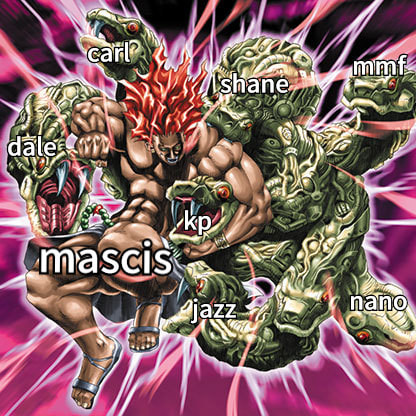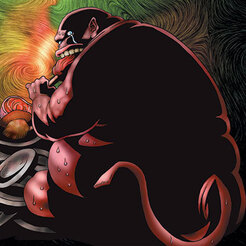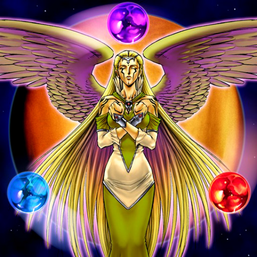|
In this series, Mascis documents their journey to and their experience in the Goat Format World Championships. This is part one of five. For those who don’t know me or my story, let me formally introduce myself. My name is Lucas “Mascis” Henigan and I love Yu-gi-oh. I have been playing the game since 2002, but started going to locals in 2005 during Goat Format. In my first event I used the Fury from the Deep structure deck and was confused as to why a pre-constructed deck was not able to win a tournament. I would play the game for years to come, attending regional and YCS events in the Philadelphia / New Jersey area up until I went to college towards the end of 2012. This happened to be right around the time that Duelistgroundz was starting to revive Goat Format and playing on Dueling Network (thank you Reggie). I attended a regional later in the year and caught the bug for Goat Format after playing (and thoroughly dismantling) the legendary Vice Captain Sanada. Since then, Goat Format has been the primary format that I dedicated my competitive Yu-gi-oh drive to. I am the inaugural Max Suffridge Memorial Tournament champion (which nabbed me the legacy invite to play in this event), came in 4th place in the Winter 2018 Duelistgroundz Seasonal Playoffs, have placed 3rd in two separate Format Library Championships (2 and 8), and placed 5th in Goat Format Championship 8. I also infrequently stream myself playing on Twitch and create Goat Format content on Youtube. For this tournament, I considered the following decks: Chaos Warrior was my top pick mainly because I felt that I might as well play the combination of the two best decks in the format, Warrior and Chaos. Warriors get to play powerful and impactful normal summons like Blade Knight, Kycoo, and Don Zaloog while being able to combat Trap Dustshoot through the searching power of Reinforcements of the Army. Playing light and dark monsters allow you to go over the top with Chaos Sorcerer and Black Luster Soldier - Envoy of the Beginning. On top of that, Chaos Warriors gets to main three Trap Dustshoots itself, which I knew going into the tournament would be everywhere and would be needed in order to win the entire event. I also felt confident in the sideboard, especially the choice of Royal Command. Decks like Chaos Turbo and even Chaos Control utilize a flip monster engine that Warriors cut, so shutting that off while still being able to retain your own effects in theory felt like what the deck like this needed to shut down these engines. Ultimately, the reason I didn’t end up playing this deck was due to not practicing enough with it and not feeling comfortable with the play style I needed to adapt to in order to pilot it. While I believed it may have been the best deck to play to counter the field for this event, I didn’t feel like I was the best player to play it. I wanted to win the tournament, but more than that I wanted to pick a deck that I would enjoy playing the tournament with. For me, that wasn’t this particular deck. The next deck on the list was Bazoo Burn. Before Jinzo & Tonic got third place at a GFC with their burn hybrid, I knew that a strong burn strategy would be viable for a tournament like this. I remember talking with my teammates and theorizing about cutting the earth engine for the superior recruiter in Mystic Tomato. I found Bazoo as well, thinking that being able to pressure with Bazoo plus Tomato attack damage then burning them out with Secret Barrel and Just Deserts was amazing. Ojama Trio’s ability to clog a board to buy time while having weak enough stats to run over with your value monsters was great in a field of Chaos decks, especially if the chaos player was playing Gravekeeper’s Spy. It wasn’t until a few weeks later that Shane debuted his version of the deck that went with a combination of flips that would love to get hit by Nobleman of Crossout in order to be brought back by Dimension Fusion. Dimension Fusion should be banned, as it just allows some of the most absurd things to happen in this format. While I still think this deck is great, it does lose to itself. Playing burn cards trades control cards like Raigeki Break and the other staple traps for damage. You don’t really care about card advantage with a deck like this since you just want to kill the opponent as fast as possible, but if you don’t draw a great combination of cards it’s difficult to play out of being down in cards. On top of that, I wasn’t happy with the side deck. Originally I experimented with siding into a weak chaos control package, but that meant cutting Des Koala out of the main deck, making the overall strategy weaker. This dissatisfaction left me putting the deck aside. The next deck on my list was Empty Jar. I wanted MMF to teach me the way of the jar, as I believed it to be the best combo deck for the tournament. This did not pan out, due to just never being able to put time aside for lessons. The reason I didn’t play it was just not practicing enough with the deck. As mentioned, I wanted to play something that I would enjoy playing, and making mistake after mistake with jar would have been miserable for me. However, I’m happy that I identified the top combo deck to beat for this tournament. Congrats to MMF for their Top 8 finish, we’re so proud of you! Chaos Agents felt like the most incredible deck on paper. It trades Thunder Dragon’s hand presence for four light monsters on board. Comboing with cards like Creature Swap and Return from the Different Dimension, you get to play an aggressive style like Chaos Warriors but with Venus and Shine Balls. I modeled the deck off of later versions of Chaos Agents, which is where the deck begins to break down. Cards such as Card Trooper, Master Hyperion, Archlord Kristya, and The Agent of Mystery - Earth do not exist in 2005. These all help mitigate drawing multiple Mystical Shine Balls and are also all just better cards than a good chunk of the other monsters that i’m playing in this list. I still think that a Venus / Shine Ball deck is viable somewhere in Goat Format, but this is likely not the best build for it. My negative results with testing the deck back this up. Finally, Goat Control. I styled the deck off of a build my teammate HyperBeam showed me a few months ago. The innovation with the deck was cutting the monster count down to 14. This allows you to combat is blind Trap Dustshoot, as what may happen is that they flip Dustshoot and hit nothing out of your hand since you are likely to draw a grip of only spells and traps. This means that you need to be maxing out on Scapegoat and Metamorphosis in order to establish presences on the board as quickly as possible. Another key to the deck is the main deck inclusion of Creature Swap. Being able to Swap a Sheep Token or a Spirit monster in exchange for Chaos Monster or a Flip card is incredible. On top of that, you don’t have any restrictions on what you can do with the card, like tributing it or attacking with it, so an unprepared duelist may just not be able to beat their own monster that you swapped.
I felt the most comfortable with piloting Goat Control out of all the decks listed above. It’s been the deck I played the most and the deck that brought me the highest finish in my career of competitive Goat Format. Also, when the average Yu-gi-oh player thinks of Goat Format they associate it with Goat Control, so I wanted to win the tournament with the deck. Think of the narrative as well, Goat Control beating out all these silly Thunder Dragon decks. I wanted to be the person to make it happen. I did not play the above version of the deck, however. Two key changes ended up making a world a difference for me in this event overall. To be continued in part two.
0 Comments
Leave a Reply. |

Categories
Upcoming Live Events (Goat Grand Prix) Tournament Coverage/Deck Lists Goat Grand Prix Application Hall of Fame Play Online Strategy: Advanced Strategy: Beginner Tier List Archives
July 2024
|
Copyright © 2015











 RSS Feed
RSS Feed